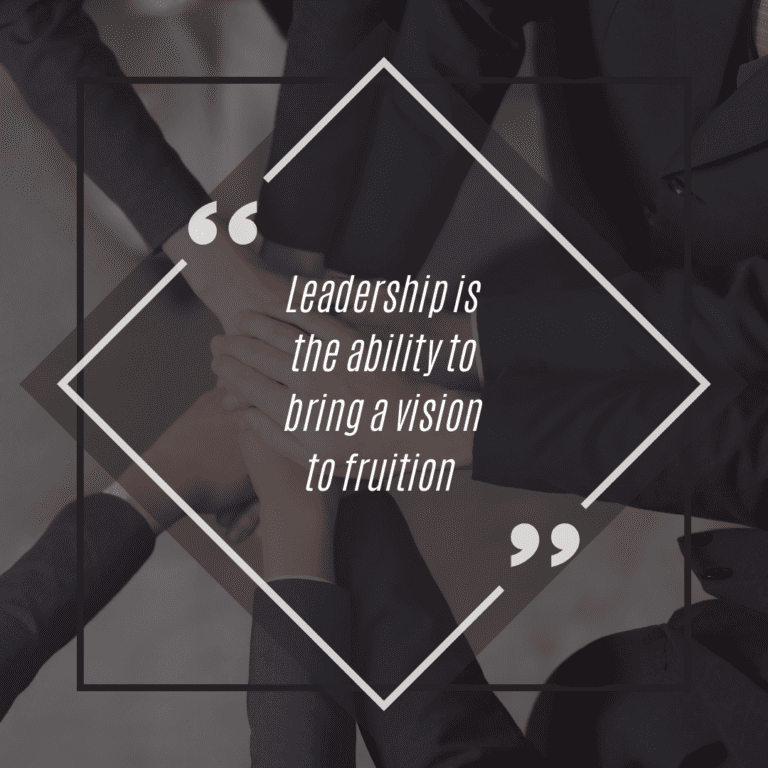Unveiling Your Personality and Emotion Connection
Emotions are the driving force behind our daily interactions and personal growth. They shape the way we perceive the world and influence our behavior. But have you ever wondered how your personality and emotions are connected?
Psychology tells us that there is a deep intertwining between personality and emotion. Understanding this connection can provide valuable insights into your own personality development and emotional awareness. By delving into this fascinating aspect of human behavior, you can enhance your self-awareness, improve your emotional intelligence, and foster healthier relationships with others.
Key Takeaways:
- Emotions play a significant role in shaping our daily interactions and personal growth.
- Understanding the connection between personality and emotion can lead to greater self-awareness and emotional intelligence.
- Exploring this connection can provide insights into your own personality traits and help improve your relationships with others.
- Developing emotional awareness can contribute to personal growth and well-being.
- By understanding the connection between personality and emotion, you can enhance your overall emotional well-being.
The Power of Emotional Contagion
Emotions have the remarkable ability to spread, shape, and define our human connections. This phenomenon, known as emotional contagion, highlights the influence and impact of emotions in our interactions with others. Emotions transcend words and actions, creating an emotional current that binds us together. By exploring the intricacies of emotional contagion, we can enrich our relationships, understand the dynamics of emotional influence, and navigate the complex web of human emotions with finesse.
Emotional contagion refers to the transfer of emotions from one person to another, leading to shared emotional experiences. It occurs effortlessly, often without conscious awareness, as we pick up on the emotions expressed by those around us. Just as a smile can be infectious and elicit joy in others, negative emotions can also be transmitted, affecting the emotional state of those involved.
“Emotions are like a virus that spreads rapidly, affecting the emotional ecosystem within which we exist.” – Dr. Sarah Johnson, Psychologist
When someone experiences strong emotions, whether it’s happiness, excitement, or sadness, it can resonate with those around them. This resonance is what fuels emotional contagion, creating a ripple effect throughout our social connections. It’s a powerful force that can shape the emotional climate of a group, influencing the overall mood and atmosphere.
Research has shown that emotional contagion occurs not only in face-to-face interactions but also through various channels such as social media, phone conversations, and even text messages. The emotional influence of others can be transferred across different mediums, amplifying the reach and impact of emotional contagion.
Emotional contagion plays a crucial role in our emotional ecosystem. Just as a healthy ecological balance is essential for the well-being of a habitat, emotional resonance and influence are vital for nurturing positive and supportive relationships. By understanding and harnessing the power of emotional contagion, we can create an emotional ecosystem that fosters empathy, understanding, and emotional well-being.
Understanding Emotional Resonance
Emotional resonance is a key aspect of emotional contagion. It refers to the ability to empathize and emotionally connect with others, putting oneself in their shoes and experiencing similar emotions. When we resonate with someone’s emotions, we become attuned to their feelings, and this connection deepens our understanding and bond with them.
For example, imagine you’re attending a live music concert. As the energy and excitement of the crowd intensify, you can feel the emotional resonance spreading from person to person. The collective emotions of joy, enthusiasm, and unity create a powerful emotional current that immerses everyone in a shared experience.
The Impact of Emotional Influence
Emotional influence is an integral part of emotional contagion. When we experience the emotions of others, it can shape our own emotional state and behavioral responses. For instance, if you encounter someone who is visibly upset, their emotions can trigger empathy within you, leading you to provide comfort and support.
On the other hand, emotional influence can also have negative consequences. If you are constantly surrounded by people displaying anger or stress, you may find yourself becoming more irritable or anxious. This highlights the importance of being mindful of the emotional influence we both receive and emit.
Navigation through the Complex Web of Emotions
The complexities of human emotions can sometimes be overwhelming. However, by understanding and embracing emotional contagion, we can navigate this intricate web of emotions with finesse. Recognizing the power of emotional contagion allows us to be more intentional in our emotional expressions, promoting positive emotions and uplifting those around us.
In the next section, we will delve deeper into the ripple effect of emotions and how emotional contagion can extend beyond individual connections, shaping the emotional currents within our society.
The Ripple Effect of Emotions
Emotions are not confined to individual experiences. They have the power to transcend boundaries and shape the dynamics of our interactions. Like a ripple in a pond, emotions create an invisible current that spreads between individuals, influencing and shaping their experiences. This ripple effect, known as emotional contagion, resonates with those around us, creating a deep and profound connection.
When you express genuine emotions, using emotional language, it creates a powerful bond with others. Your emotions can evoke similar feelings in those around you, establishing an emotional connection that goes beyond words. Through emotional contagion, your authentic expression becomes a catalyst for shared experiences, shaping the atmosphere and mood of the interaction.
“Emotions flow through a shared current, bringing us closer to one another. It’s through our emotional experiences that we truly connect.”
By understanding the dynamics of this emotional current, you can develop a heightened awareness of the impact of your own emotions on others. Your emotional experiences have the potential to uplift or dampen the mood, influencing the overall quality of the interaction. Cultivating positive emotions can create a ripple effect of joy, compassion, and understanding, fostering deeper emotional connections with the people you encounter.
The Importance of Emotional Experiences
Our emotional experiences shape the way we relate to the world and to others. When you engage in open and vulnerable emotional exchanges, it opens the space for others to do the same. This mutual sharing of emotions strengthens the emotional bond and builds a foundation of trust and empathy. Through these meaningful exchanges, you can create lasting memories and connections that transcend time and distance.
Emotional experiences have the power to bring people together, breaking down barriers and fostering a sense of unity. Whether it’s the shared elation of celebrating a milestone or the collective support during times of grief, these experiences intertwine our lives, weaving a tapestry of shared emotions that strengthen our emotional connections.
Building Deeper Emotional Connections
Creating deeper emotional connections requires active engagement and genuine presence. By being fully present in our interactions, we can pick up on the subtle emotional cues and nuances that others express. Tuning in to these cues allows us to respond with empathy and understanding, deepening the emotional connection.
Authentic communication, including active listening and thoughtful responses, fosters meaningful emotional exchanges. By acknowledging and validating the emotions of others, you create a safe and nurturing environment for emotional connection to flourish. This creates a space where emotional experiences can be openly shared and understood, strengthening the bond between individuals.
Through emotional connection, we create a network of support and understanding that enhances our overall well-being. It is through these connections that we find solace, inspiration, and a sense of belonging. Embrace the power of emotional experiences, and let the ripple effect of emotions guide you towards deeper, more fulfilling connections.
Emotional Contagion and the Emotional Economy
Every interaction you have throughout your day involves a transfer of emotions. Whether it’s a simple exchange with a colleague or a heartfelt conversation with a loved one, emotions are constantly flowing between individuals. These exchanges contribute to a net balance of emotional gains and losses, shaping your mood and overall perception of the day. This intricate interplay can be described as the “emotional economy” – a dynamic system where emotional subtext affects your emotional well-being long after the encounter is over.
In this emotional economy, emotions act as currency, exchanged during daily interactions. Each emotional exchange involves giving and receiving, influencing how you feel and impacting the emotional well-being of both parties. Positive encounters may leave you feeling uplifted, energized, and content, while negative interactions can cause emotional exhaustion, sadness, or frustration.
It’s important to recognize the emotional economy at play in order to navigate your emotional exchanges with mindfulness and strive for a more positive emotional balance. By becoming aware of the emotional gains and losses in your interactions, you can make conscious choices to prioritize emotional well-being and foster positive emotional contagion.
“The emotional economy of our interactions shapes our emotional well-being and influences the quality of our relationships. By recognizing the power of emotional contagion, we can create a ripple effect of positive emotions.” – Dr. Sarah Jensen
Understanding the emotional economy also highlights the impact of emotional subtext – the underlying emotional messages communicated through nonverbal cues, tone of voice, and body language. These subtle emotional signals can linger long after the encounter, shaping your emotional well-being and influencing future interactions. By paying attention to emotional subtext, you can gain a deeper understanding of the emotional currents at play and adjust your own emotional responses accordingly.
Emotional well-being is not only important for your own mental health but also for the well-being of those around you. Positive emotional contagion fosters a healthier emotional ecosystem, leading to stronger connections and harmonious relationships.
Developing emotional intelligence and awareness allows you to navigate the emotional economy more effectively. By recognizing the emotional gains and losses in your interactions and being mindful of emotional subtext, you can create a more positive emotional balance, enhance your emotional well-being, and contribute to a healthier emotional ecosystem.
Inroducing Emotional Contagion: The Emotional Economy in Action
To illustrate the concept of the emotional economy, let’s take a closer look at the impact of emotional contagion in real-life scenarios.
| Scenario | Emotional Gains | Emotional Losses |
|---|---|---|
| 1. Meeting a cheerful friend | + Joy, positivity | – None |
| 2. Receiving criticism from a colleague | – Confidence, motivation | + Frustration, self-doubt |
| 3. Comforting a grieving friend | + Empathy, connection | – Sadness, emotional exhaustion |
| 4. Witnessing an act of kindness | + Warmth, gratitude | – None |
This table demonstrates how emotional gains and losses can vary in different scenarios. While some encounters may result in significant emotional gains, others may lead to emotional losses. By understanding the emotional economy, you can identify which interactions contribute to your emotional well-being and prioritize cultivating positive emotional connections.
By recognizing the power of emotional contagion and the dynamics of the emotional economy, you can actively shape your emotional well-being and foster positive emotional exchanges. The next section will delve deeper into the dance of emotional contagion, exploring the intricacies of emotional transmission and influence.
The Dance of Emotional Contagion
Engaging in the emotional economy means participating in an intricate dance of emotions. As you interact with others, you unknowingly transmit and receive feelings, resulting in changes in your emotional states. Whether it’s a shared joke that leads to collective laughter or witnessing someone’s distress that leaves you feeling sympathetic, emotions have the power to cross boundaries and influence each other. By understanding the dance of emotional contagion, you can navigate these interactions with greater awareness and emotional intelligence.
Emotional transmission occurs naturally during our daily interactions. It’s a subtle yet powerful process where emotions are subtly passed from one person to another. It happens through nonverbal cues, facial expressions, tone of voice, and body language. Without even realizing it, you can catch someone’s joy, enthusiasm, or even their sadness or frustration.
Emotional influence is an essential aspect of emotional contagion. When you’re in a positive emotional state, you can uplift others and spread positivity. Conversely, negative emotions can also have a ripple effect, causing distress or discomfort in those around you. This interplay of emotional influence shapes the emotional ecosystem within your social circles.
“Emotions are like a dance, flowing between individuals and influencing the energy in the room. We have the power to create a symphony of positive emotions and bring harmony to those around us.”
By developing emotional awareness, you become more attuned to the emotions you transmit and receive. This awareness allows you to navigate emotional interactions with greater empathy, understanding, and consideration for others. Emotional awareness also enables you to recognize and regulate your own emotional responses, leading to healthier and more fulfilling relationships.
Practicing Emotional Awareness
Cultivating emotional awareness requires mindfulness and intentionality. Here are some strategies to help you develop emotional awareness:
- Take moments of self-reflection to identify and understand your own emotions.
- Practice active listening and empathize with others to gain insight into their emotions.
- Observe nonverbal cues, such as facial expressions and body language, to better understand the emotions of those around you.
- Engage in open and honest communication, expressing your emotions clearly and respectfully.
- Pay attention to the emotional atmosphere in different settings and adjust your behavior accordingly.
Developing emotional awareness is an ongoing process that requires practice and self-reflection. As you become more aware of the emotional dance taking place in your interactions, you can foster deeper connections, promote positive emotions, and build healthier relationships.
In the next section, we will explore the role of the amygdala in emotional contagion and the fascinating science behind this phenomenon.
The Amygdala’s Role in Emotional Contagion
The amygdala, often referred to as the brain’s emotional radar, plays a central role in emotional contagion. It scans our surroundings for emotionally salient events and potential threats, triggering instinctual responses. The amygdala not only processes our personal emotions but also reacts to emotional cues in others, setting off a cascade of reactions. By unveiling the amygdala’s role in emotional contagion, we gain insights into the intricate interplay between our brains and emotions.
The Fascinating Science of Emotional Contagion
Emotional contagion is a captivating and perplexing phenomenon that challenges conventional understanding. It revolves around the transmission of emotions through nonverbal cues, often occurring before conscious awareness kicks in. These subtle nuances in facial expressions, body language, and tone of voice allow for the exchange of emotional currents between individuals.
Imagine a crowded room where someone’s laughter ignites a wave of mirth that leaps from person to person. This is emotional contagion in action, a captivating synchronization of emotions that transcends words and connects us on a deeper level.
Emotional contagion manifests in various scenarios, both visible and invisible. It can occur in the workplace, as colleagues mirror each other’s enthusiasm or stress. It can also happen in intimate relationships, as partners empathetically share each other’s joy or sadness. This enigmatic mechanics of emotional contagion highlight the intricate tapestry of human interaction.
Decoding the science behind emotional contagion offers invaluable insights into our emotional landscape. It provides us with a deeper understanding of the dynamics that shape our relationships, both personal and professional. By unraveling the mysteries of emotional contagion, we can cultivate greater emotional intelligence, enhance our communication, and foster more meaningful connections with others.
The Mechanics of Emotional Contagion
Emotional contagion occurs through a complex interplay of emotional synchronization and sensitivity to emotional cues. Individuals emitting strong emotions act as emotional zeitgebers that influence and synchronize the emotional states of those around them.
“Emotions are like waves, capable of pulling others into their currents or being swept up by a tidal wave of shared sentiment.”
The process of emotional contagion involves not only the expression and reception of emotions but also the interpretation and response to these emotional signals. This intricate dance of emotional currents shapes our experiences, influencing how we perceive and interact with the world.
By immersing ourselves in the fascinating science of emotional contagion, we can become more aware of the emotional currents that flow through our lives. We can explore the subtleties of emotional nuances, recognize the power of emotional synchronization, and harness the potential for deeper emotional connections.
| Key Aspects | Insights |
|---|---|
| Emotional Nuances | Understanding the subtle expressions and nonverbal cues that transmit emotions. |
| Emotional Currents | Exploring the flow of emotions between individuals and the impact of these currents. |
| Emotional Synchronization | Examining the mechanisms that lead to the alignment of emotions within a group or relationship. |
The Intricacies of Emotional Highways
Emotional highways consist of two distinct paths: the low road and the high road. These pathways play a crucial role in our emotional responses and the transmission of our feelings to others. Understanding the intricacies of these emotional highways allows us to navigate our emotions with mindfulness and intentionality.
The low road represents our instinctual and rapid emotional reactions. It operates at an unconscious level, silently transmitting emotions through neural pathways involving the amygdala. This rapid transmission fuels spontaneous responses, often without conscious thought or awareness. These instinctual reactions can have both positive and negative impacts on our interactions with others.
The high road, on the other hand, involves a more deliberate and thoughtful processing of emotions. It fosters awareness and enables us to navigate complex emotional experiences with greater mindfulness. Taking the high road allows us to pause, reflect, and respond to emotional situations in a more deliberate and intentional manner. By engaging the high road, we can cultivate empathy, understanding, and effective communication.
Whether we find ourselves on the low road or the high road, our emotional responses have the power to influence and shape our interactions with others. Emotional transmission occurs naturally as we navigate these emotional highways, amplifying or dampening the emotions of those around us.
“Emotional highways are the pathways through which our feelings travel, connecting us to those we interact with and allowing for the exchange of emotions.” – Dr. Emily Thompson
By being aware of the intricacies of these emotional highways, we can better understand our emotional responses and their impact on others. We can choose to navigate the emotional highways with intention, fostering healthier and more constructive connections.
Emotional Highways: A Comparison
| Low Road | High Road |
|---|---|
| Instinctual and rapid emotional reactions | Deliberate and thoughtful processing of emotions |
| Silent transmission of emotions through neural pathways involving the amygdala | Requires conscious awareness and deliberate decision-making |
| Spontaneous responses without conscious thought | Allows for reflection and intentional response |
The Power of Emotional Connection in Relationships
Emotional connections in relationships have a profound impact on our well-being, encompassing both our mental and physical health. These deep attachments play a vital role in fostering a sense of belonging and emotional security.
When we form emotional connections with others, we create a safe space for open and honest expression of our feelings. This facilitates a greater understanding and acceptance of our emotions, leading to improved mental health. By sharing our thoughts and emotions with trusted individuals, we can alleviate stress, reduce anxiety, and even prevent the onset of depression.
Moreover, strong social connections that involve emotional connection have tangible effects on our physical health as well. Research has shown that individuals with strong social networks tend to live longer and have lower risks of certain diseases. The emotional support we receive from these connections acts as a buffer against stress, strengthening our immune system and promoting overall well-being.
To build emotional connection in relationships, it is essential to foster authenticity, vulnerability, and compassion. Effective communication plays a key role in establishing a deep understanding and emotional bond with others. This involves actively listening, empathizing, and validating the emotions of our loved ones. By setting clear boundaries and practicing active compassion, we create an environment that nurtures emotional connection.
Benefits of Emotional Connection in Relationships:
- Improved mental health and emotional well-being.
- Reduced risk of developing anxiety and depression.
- Increased longevity and lower risks of certain diseases.
- Enhanced emotional support and resilience.
- Deeper sense of belonging and connection.
“A deep emotional connection is like sunlight for the soul. It nourishes, strengthens, and brings warmth to our lives.”
By prioritizing emotional connection in our relationships, we can cultivate deeper bonds and promote our overall well-being. The profound impact of emotional connections extends beyond our own lives, creating a ripple effect that positively influences the mental and physical health of those around us.
| Benefits of Emotional Connection in Relationships |
|---|
| Improved mental health and emotional well-being |
| Reduced risk of developing anxiety and depression |
| Increased longevity and lower risks of certain diseases |
| Enhanced emotional support and resilience |
| Deeper sense of belonging and connection |
Conclusion
Unveiling the connection between personality and emotion is a transformative journey that empowers you to gain a deeper understanding of yourself and your interactions with others. By delving into the power of emotional contagion, the integral role of the amygdala, and the intricate dance of emotions, you can enhance your emotional intelligence and navigate the complexities of emotional connection.
Building strong emotional connections in relationships is a key contributor to overall well-being. These connections allow you to cultivate deeper, more meaningful bonds with others, fostering a sense of belonging and support. Embracing emotional awareness and nurturing these connections can positively impact your mental and physical health, leading to increased resilience and happiness.
As you continue on your journey of self-discovery, remember the importance of emotional authenticity, compassion, and effective communication in fostering meaningful connections. By nurturing your emotional awareness and cultivating connection, you have the power to shape a life filled with enriching relationships and greater emotional fulfillment.






